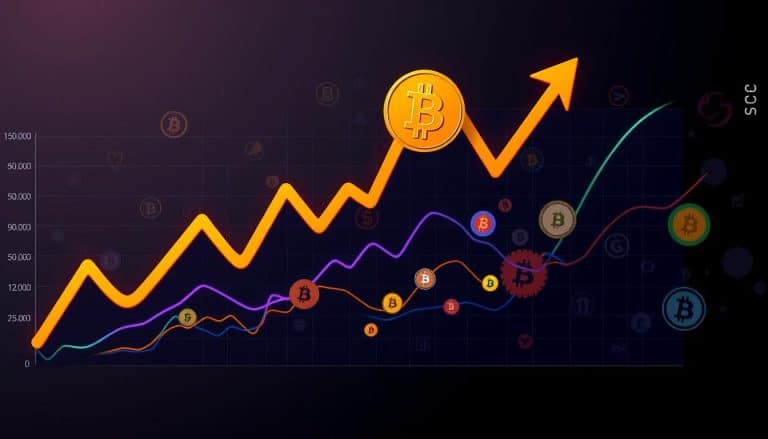Xrp Utility And Its Impact On Demand
You may have heard of XRP, one of the most popular digital assets on the market today. But what is it and how does it work? XRP is a digital asset created by Ripple, a payments technology company based in San Francisco. It has become increasingly popular due to its utility as a bridge currency between different fiat currencies and other cryptocurrencies. In this article, we’ll discuss XRP’s utility and its impact on demand for the asset. We’ll look at how Ripple has leveraged this utility to increase demand, potential regulatory issues, challenges facing XRP’s utility, benefits derived from it, and the potential for further growth and expansion.
Overview of XRP
You can think of XRP as a powerful symbol of today’s digital economy – it’s the currency of the future! It is the native digital asset on the Ripple blockchain, and is designed to facilitate fast and affordable payments between financial institutions. It has been adopted by many banks and payment providers looking to capitalize on tokenization trends and distributed ledger technology. XRP also has some unique features that make it attractive for use in cross-border payments, such as its high transaction throughput capabilities. This allows users to send transactions quickly without having to wait for long confirmation times or incur expensive fees. As more businesses look for ways to reduce costs associated with global payments, XRP could play an important role in this process as its utility increases. With these advantages, it is no surprise that Ripple’s role in XRP’s utility has been growing steadily over time. Moving forward, this trend may continue as more people become aware of its potential benefits.
Ripple’s Role in XRP’s Utility
Ripple plays an integral role in driving the usage of the digital asset XRP. The company provides a platform that helps facilitate multi-hop payments, as well as setting interoperability standards for cross-border payments and transfers. Ripple has invested heavily in developing tools to help customers use XRP more efficiently and effectively. As such, Ripple is providing infrastructure that increases access to XRP, which in turn leads to increased demand for the digital asset.
| The rippleNet platform has enabled banks, payment providers, digital asset exchanges and corporations around the world to quickly send money globally with end-to-end tracking using tokenized currencies like XRP. This has allowed businesses to reduce costs associated with cross border payments while also increasing speed and efficiency when transferring funds. Additionally, Ripple’s xRapid product allows financial institutions to source liquidity on demand from several different sources using XRP tokens as a bridge currency between two fiat currencies. | |||
|---|---|---|---|
| Multi hop payments | RippleNet Platform | xRapid Product | |
| Interoperability Standards | End-to-End Tracking | Tokenized Currencies |
This increased utility of XRP has led to greater awareness of its capabilities and applications among users who may not have been aware of it before; thus creating more demand for the digital asset itself. As Ripple continues to innovate new ways for people to use XRP more easily and securely, there will likely be an increase in demand for this digital asset as well.
Impact of XRP’s Utility on Demand
As XRP’s utility increases, so does its adoption and liquidity. This leads to improved market sentiment amongst investors, which drives demand for the asset. With more users accessing XRP’s benefits, including faster settlement times and low transaction fees, the appeal of this digital currency has been bolstered. The growing utility of XRP is a major factor in driving up demand for the asset.
Increased Adoption
Increased adoption of XRP is often seen as the key to unlocking its full potential, and with that comes the popular adage ‘the more, the merrier’! By increasing infrastructure and global expansion, XRP has seen increased use in both online payments and financial services. This allows for greater liquidity in both traditional banking systems as well as modern digital transactions. The rising demand for XRP not only increases its utility but also provides an incentive for further development of new technologies and applications related to it:
- These include improved security measures such as multi-signature wallets
- They have enabled faster transaction speeds than other blockchains
- Additionally, they have allowed for easier integration of existing systems into blockchain networks
- Finally, they are helping reduce costs by providing a transparent method of payment across different platforms.
With this increased adoption, it is no surprise that XRP’s popularity continues to grow exponentially throughout the world. This has been demonstrated through large investments from institutional investors, venture capital firms, and private individuals alike. As a result of the growing demand for XRP, its value has risen significantly over time which could lead to even more widespread adoption in turn aiding in higher levels of liquidity.
Increased Liquidity
The ever-growing popularity of XRP has created a wave of increased liquidity, allowing users to access more funds with greater ease than ever before. This additional liquidity has been beneficial for those looking to make cross border payments as it helps reduce the transaction costs associated with such transactions. By increasing the number of potential buyers and sellers, XRP’s improved liquidity has also helped create an overall market sentiment that is far more positive than in previous years. As a result, investors have greater confidence in their ability to easily move funds across borders without incurring too much overhead cost, making XRP an increasingly attractive cryptocurrency to many. With this improved market sentiment, demand for XRP will likely continue to rise as people take advantage of its low transaction costs and efficient cross border payments. Moving forward, XRP’s improved liquidity may become a key factor driving its utility and adoption even further.
Improved Market Sentiment
You’ll love the boost in confidence that comes with XRP’s improved market sentiment! By addressing technical limitations and removing the possibility of Ripple mining, XRP has been able to create a reliable digital asset that can be used for cross-border payments. Here are some advantages of this improved market sentiment:
- Increased trust towards the currency, which leads to more potential users who may use it as their primary currency.
- It offers greater liquidity since more people will be willing to trade in it due to its reliability and stability.
- It allows traders to build positions without worrying about huge price fluctuations that come with other currencies.
- Potential investors feel more comfortable investing in XRP due to its increased acceptance by financial institutions worldwide.
These benefits have allowed XRP’s utility to become an important factor in driving further demand for the currency, making it a valuable asset for both investors and users alike.
Leveraging XRP’s Utility to Drive Further Demand
You can leverage XRP’s utility to drive further demand by introducing new use cases, forming partnerships with financial institutions, and expanding existing use cases. By introducing new use cases for XRP, this could attract potential users and increase its utility. Additionally, forming partnerships with major financial institutions would provide a reliable source of funds and liquidity for the platform while also increasing awareness of XRP as an asset class. Finally, expanding existing use cases could lead to greater adoption of the platform due to increased familiarity among users.
Introducing New Use Cases
Exploring new use cases for xrp can help drive up demand and provide more utility! XRP has been utilized in the past to facilitate cross border payments, but its potential goes far beyond that. By introducing new use cases for xrp such as institutional partnerships, businesses can leverage the technology to facilitate faster, cheaper payments between parties. This could open up an entire new world of opportunities for financial institutions and enable them to further optimize their payment processes.
| Use Case | Benefits | Challenges |
|---|---|---|
| Cross Border Payments | Faster Transactions/Lower Fees; Increased Security Reduced Volatility Risk |
Regulations; Exchange Interoperability Adoption Rates |
| Institutional Partnerships | Increased Liquidity; Improved Scalability Open Up New Revenue Streams |
Regulatory Overhead; Internal Processes Adaptation Costs & Timeframes |
The introduction of these additional use cases demonstrates how XRP’s utility is capable of driving further demand while also offering tangible benefits to those who are leveraging it. It would be wise for companies to explore partnerships with financial institutions as this could unlock access to a much larger ecosystem and provide endless possibilities for growth.
Partnerships with Financial Institutions
By partnering with financial institutions, you can open up access to a much larger ecosystem and unlock the potential of new revenue streams. Through institutional partnerships, XRP can provide liquidity management advantages to help streamline transactions and reduce costs for institutions. These advantages include:
- Faster settlement times
- Increased efficiency in cross-border payments
- Reduced transaction fees
- Enhanced security for data privacy
- Improved scalability with higher throughput rates.
The implications of these partnerships are far-reaching, as they can create an impact on how money is stored, accessed, transferred, and exchanged globally. Furthermore, it also creates an opportunity for XRP to expand its existing use cases beyond traditional banking systems while unlocking untapped markets that were previously inaccessible.
Expanding Existing Use Cases
Through partnering with financial institutions, XRP can expand its existing use cases to capitalize on untapped markets, delivering greater efficiency and security for global money transfer. By introducing paywall solutions and decentralized finance mechanisms into the mix, XRP users will benefit from cost-effective solutions that leverage the blockchain’s secure infrastructure and distributed ledger technology (DLT). Moreover, this provides an opportunity for financial institutions to diversify their portfolios in terms of digital assets. With these new use cases being brought to market, it is important to consider how regulatory framework might influence XRP’s utility going forward.
Regulatory Impact on XRP’s Utility
You’re feeling the pressure of regulatory forces impacting XRP’s utility, aren’t you? As regulatory clarity around cryptocurrencies continues to rise, so does the pressure on XRP’s utility. Tokens like XRP are now being subject to more intense scrutiny by governments and regulators around the world. This is making it increasingly difficult for XRP holders to get a clear understanding of their rights and obligations when investing in or using digital assets. On top of this, there are now more stringent requirements for trading platforms that list XRP coins, leading to reduced liquidity and higher transaction costs. All of these factors have had an impact on the demand for XRP tokens as investors take a wait-and-see approach until greater regulatory clarity is established. But what challenges lie ahead in terms of increasing demand? That remains to be seen as we move into uncharted territory with regards to cryptocurrency regulation.
Challenges Facing XRP’s Utility
The regulation of XRP’s utility is an important factor in understanding its potential as a payment system, but there are other issues to consider when discussing the current challenges facing XRP’s utility. One of these issues is scalability: as more people use XRP for payments, the network must be able to scale up to meet the increased demand. Additionally, due to its decentralized nature, XRP may face liquidity concerns if users are unable or unwilling to quickly move their funds between exchanges.
These scalability and liquidity issues are significant challenges that need to be addressed before XRP can become a widely used payment system. To address them effectively, developers will need to create solutions that allow for faster transactions and greater liquidity between exchanges. However, this could prove difficult given the decentralized nature of the currency and its lack of central authority. Despite these difficulties, it is possible for developers and users alike to find creative solutions that improve XRP’s utility and make it a more useful payment system for all involved. By addressing both regulatory impact on XRP’s utility and current challenges such as scalability and liquidity concerns, we can begin to understand how best to maximize the benefits of using XRP as a payment system.
Benefits of XRP’s Utility
You can reap the rewards of using XRP as a payment system, with its fast transactions and high liquidity sparking a fire in your financial life. The utility of XRP provides benefits beyond what traditional methods offer:
- Reducing friction: By processing payments quickly and without any delays, XRP reduces the time it takes to move money from one place to another. This also helps remove unnecessary intermediaries and fees associated with traditional payment systems.
- Capital efficiency: XRP has been designed to be highly capital efficient by allowing users to transfer funds without the need for large amounts of capital. This makes it ideal for businesses that are looking for ways to reduce their capital costs and increase their profits.
The potential for future growth and expansion of xrp’s utility is clear, providing an exciting opportunity for those who want to get in on the ground floor of this revolutionary technology.
Potential for Future Growth and Expansion of XRP’s Utility
Experience the power of XRP first-hand and unlock new possibilities with its cutting-edge technology. XRP has proven to be a cost-efficient, fast, and secure asset for global financial transactions since its release in 2012. As the cryptocurrency continues to gain traction in different parts of the world, its utility is also expanding rapidly. With its global outreach capabilities and low transaction costs compared to other digital assets, more companies are beginning to recognize the potential of XRP as a viable payment option. The adoption rate is growing exponentially and it’s giving rise to new opportunities that can provide additional value for users. This could ultimately lead to greater demand for XRP in the near future as businesses continue to explore how this technology can benefit them on a larger scale.
Frequently Asked Questions
What other cryptocurrencies are competing with XRP?
You’re likely familiar with the top cryptocurrencies like Bitcoin and Ethereum, but there are other coins in the mix such as Litecoin, Cardano, and EOS. All of them have different levels of speculation effects as well as varying network scalability. For example, Litecoin has a faster transaction speed than Bitcoin, making it attractive for investors looking to capitalize on short-term opportunities.
What are the implications of XRP’s utility on the cryptocurrency market overall?
You may be wondering what implications XRP’s utility has on the cryptocurrency market overall. Its instant payments and decentralized exchanges offer a unique advantage, allowing for faster transactions and more security. This could lead to increased demand for XRP, as well as greater usage of other cryptocurrencies.
How can XRP’s utility be leveraged to increase its demand?
Investigate how fast payments and smart contracts can be leveraged to increase XRP’s demand. Analyze the implications of this approach, exploring its potential for creating an efficient, secure payment system that offers consumers greater control over their finances.
What are the potential risks associated with XRP’s utility?
You could face potential risks associated with XRP’s utility, such as institutional adoption issues and scalability concerns. Analyze these closely to ensure success in leveraging its use.
How can XRP’s utility be used to increase its value over time?
You can use marketing strategies and address scalability issues to increase the value of XRP over time. For instance, an interesting statistic is that XRP is currently the second-largest digital asset with a market capitalization of nearly $10 billion.




 Bitcoin
Bitcoin  Ethereum
Ethereum  Tether
Tether  XRP
XRP  USDC
USDC  TRON
TRON  Lido Staked Ether
Lido Staked Ether  Dogecoin
Dogecoin  Figure Heloc
Figure Heloc  Cardano
Cardano  WhiteBIT Coin
WhiteBIT Coin  Bitcoin Cash
Bitcoin Cash  Wrapped stETH
Wrapped stETH  Wrapped Bitcoin
Wrapped Bitcoin  USDS
USDS  Binance Bridged USDT (BNB Smart Chain)
Binance Bridged USDT (BNB Smart Chain)  Wrapped eETH
Wrapped eETH  Chainlink
Chainlink  Monero
Monero  WETH
WETH  Stellar
Stellar  Zcash
Zcash  LEO Token
LEO Token  Coinbase Wrapped BTC
Coinbase Wrapped BTC  Hyperliquid
Hyperliquid  Ethena USDe
Ethena USDe  Litecoin
Litecoin  Sui
Sui  Avalanche
Avalanche  sUSDS
sUSDS  Hedera
Hedera  Shiba Inu
Shiba Inu  Dai
Dai  USDT0
USDT0  PayPal USD
PayPal USD  Mantle
Mantle  World Liberty Financial
World Liberty Financial  Toncoin
Toncoin  Cronos
Cronos  Ethena Staked USDe
Ethena Staked USDe  Uniswap
Uniswap  Polkadot
Polkadot  Canton
Canton  Aave
Aave  USD1
USD1  MemeCore
MemeCore  Rain
Rain  Bitget Token
Bitget Token